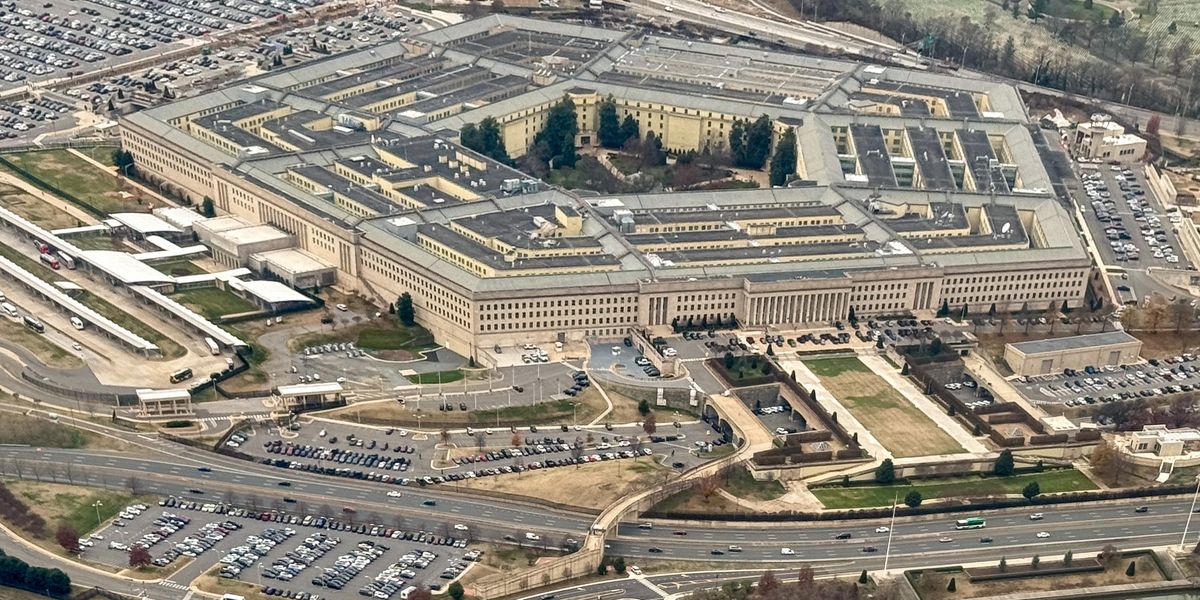What explains the global double standard on suffering? A timeless lesson in how pity is weaponized – or withheld.
As C.S. Lewis famously observed, “Pain is God’s megaphone to rouse a deaf world” – a stark reminder that suffering is often the loudest call for change we cannot afford to forego.
Yet, curiously, the world community seems to clearly hear God’s voice from Ukraine, but not from Gaza and Russia.
So why does the suffering of Ukrainians tend to stir deeper sorrow and elicit stronger support than the plight of Palestinians and Russians?
An ancient source reveals the hidden, mutually reinforcing factors controlling our empathy - and the tools for leaders to kindle or suppress pity to their advantage.
A master class from an ancient sage
In Rhetoric, a foundational text of Western oratory, the ancient Greek philosopher Aristotle argued that emotions - states of pleasure or pain - shape judgment and action. Grouped under pathos, they are powerful tools of persuasion, alongside ethos (moral credibility) and logos (logical reasoning based on facts).
Aristotle’s Poetics - a landmark study of dramatic art, laying the groundwork for storytelling to this day - explains how well-crafted, compelling tragedy evokes pity (eleos) and fear (phobos) to bring about catharsis, an emotional cleansing.
The ancient master of political and dramatic psychology understood pity, the emotional counterpoint to indignation and envy, not as mere sentimentality, but as pain at another’s undeserved misfortune. Pity is not just about what happens, but how it is framed. This emotion, then, is highly conditional, shaped by a fragile, malleable calculus of perception. Essentially, it hinges on five interwoven, finely balanced factors in the right measure, operating in a dynamic system.
From the timeless insights of Aristotle’s Rhetoric and Poetics - as well as the blood-stained wisdom of Attic tragedy itself - we can distill the following key drivers of pity (P): the suffering is undeserved (U), comes as a surprise (S), is grave (G), is inflicted on those who, to some extent, resemble us (R), and unfolds close enough to cast a shadow on our own fate (C). Together, these factors form a strikingly apt model for dissecting how political actors weaponize pity for the purpose of political persuasion.
This, then, is what I call the “Political Pity Equation” (PPE) – or, in its more specific form, the “Public Pity Equation” – a robust heuristic for understanding how pity is manufactured and how it can be strategically shaped in the information war: P = U + S + G + R + C.
This capstone formula for the politics of selective pity is as potent as it is pliable, because each driver can be dialed up or down to sculpt public sympathy with unerring finesse. Information warriors across different arenas routinely manipulate these factors to calibrate pity, crafting emotionally compelling narratives and eliciting strong emotional responses that serve shifting political agendas. This versatility makes the “Political Pity Equation” an exceptionally powerful instrument of influence and control.
To illustrate strategic pity calibration: Whenever the leaders of the collective West judged that Israel had reached a critical milestone in what German Chancellor Friedrich Merz, albeit with reference to Iran, termed its “dirty work,” they deliberately amplified pity for the long-neglected, suffering Palestinian people.
Critics may argue that such emotional pivots serve not to correct injustice, but to manage perceptions: a tactical show with a controlled release of empathy by both leaders and audiences designed to contain mounting backlash, without altering the underlying staunchly pro-Israeli policy.
Perhaps such maneuvers are designed especially to ease tensions among sizeable Muslim populations at home, a large and politically influential voter base. The gesture may also seek to project – however belatedly and transparently hollow – an image of the West as the moral arbiter, towering above its own double standards: a last-ditch strategic gambit aimed at preserving and bolstering its acutely imperiled soft power on the world stage.
The five enablers of pity
In an age where pity has predominantly morphed into a calculated outcome in the brutal arena of global information warfare - crafted by political high-technology and choreographed with algorithmic precision - grasping the logic of the PPE is nothing short of essential. Let us, therefore, unpack the five key triggers of pity, one by one.
Undeservedness
Misfortune judged undeserved – especially perceived injustice – is often the very spark that ignites pity, striking a deep emotional chord. An innocent man behind bars stirs immediate sorrow for the fate he endures. Pity surged worldwide in 2020 when protests erupted over a searing symbol of suffering caused by a police force accused of brutal abuse of power: George Floyd, a black man, pinned beneath a Minneapolis officer’s knee, gasping the haunting words, “I can’t breathe.” The harrowing footage of this incident spread like wildfire, fueling outrage and solidarity around the world.
As a striking example of perception eclipsing truth, intense public pity overshadowed the fact that Floyd – a repeat violent offender – was lawfully restrained as a suspect, spoke for over nine minutes despite claiming he could not draw air, and was pronounced dead not on the street corner memorialized as a murder scene or in the ambulance, but later at the hospital. Nevertheless, his death galvanized mass outcry, demands to abolish the police, and riots causing over $1 billion in damage.
In contrast to the passionate reaction provoked by seemingly undeserved ordeals, a toppled tyrant awakens no pity – only the cold satisfaction of justice served. When Rumanian president Nicolae Ceaușescu was executed by firing squad in 1989, the crowd erupted – not in grief, but in relief.
Suprise
An unexpected, sudden reversal – one of the key ingredients making a plot truly tragic and emotionally gripping – evokes pity, too. A classic example of such peripeteia reinforced by anagnorisis (recognition) in Greek drama is King Oedipus’ sudden harrowing discovery that he had unknowingly killed his father and married his mother. This unexpected realization triggered a cascade of horror: self-blinding, disgrace, and exile.
If, in contrast to such gut-wrenching surprise, pain arises as a slow, natural consequence of the victim’s own choices – lung disease from years of smoking or financial ruin from reckless gambling – pity is minimal or entirely withheld. There is no catharsis, that sudden cleansing flood of emotion stirred by shocking suffering, in the predictable.
Gravity
Pity needs pain – but in the right dose. If harm is too minor, it barely touches us. Yet the moment misfortune becomes total and irreversible – death, annihilation – hope evaporates: There is no one left to save, no outcome yet to change. What fills the void then is not pity, but dread, awe, or numb detachment – a stark reminder of pity’s fickle nature, easily giving way to entirely different emotions. Tellingly, in much Christian art and devotion, Jesus’ suffering on the cross evokes pity before his death; once dead, the emotion shifts to reverence or awe.
We empathize with the wounded warrior crying out in anguish, not someone who died instantly. Hector’s agonizing death at Achilles’ hands moves us deeply. So does the haunting image of the terrified Vietnamese girl Phan Thị Kim Phúc fleeing after a napalm strike by a U.S. ally in 1972 – her humanized suffering ignited global outrage. By contrast, the quiet toll of civilian deaths from Israeli and American strikes on Iran in 2025 barely registers.
Resemblance
We are wired to care more about those who resemble us. Whenever victims feels socially or morally relatable – sharing our values, struggles, or life trajectory – their pain hits closer to home, because deep down, we recognize ourselves in them. The suffering becomes not just theirs, but potentially ours.
Consider Malala Yousafzai, a Pakistani girl shot in 2012 ostensibly for what millions of children worldwide embrace as a routine: going to school. That haunting familiarity made her story evoke instant, global pity. But this emotion is the product of a delicate alchemy: Too little similarity, and the connection falters; too much, and the emotional distance required for compassion collapses into defensiveness or other inner states.
Closeness
Pity thrives on proximity – we are most moved when suffering is vivid, recent, or nearby. Predictably, pity dies at the extremes: if the suffering is too close, this emotion turns into fear; too far, and it fades into indifference. Only at moderate proximity does pity truly take hold.
The grim photo of Alan Kurdi, the two-year-old Syrian refugee boy who drowned in 2015 seeking safety, perfectly captured this fragile middle ground: close enough in innocence to spark global pity for the living refugees he came to represent, yet distant enough in place, context, and risk to spare viewers the paralyzing fear of personal danger.
Catch-all propaganda objects
The examples above offer a glimpse of how particular catch-all propaganda objects wield power across nearly all contexts. Functioning as emotional master keys, their potency lies, most notably, in their ability to activate multiple enablers of pity at once, making them remarkably resilient and versatile tools of influence and control. Their impact intensifies when the information strategy forges a tight link between the object and the specific context of suffering.
Tragically, few tools of emotional manipulation rival the suffering child, an image that concentrates a broad spectrum of pity triggers into a single, devastating symbol. Close behind: the suffering woman. Crucially, the child serves as the propaganda world’s nuclear option, which simply cannot be ignored: universally potent, overwhelming in its emotional impact, nearly impossible to counter, and devastatingly effective across contexts.
The child’s innocence and vulnerability render its pain fundamentally unjust. Where one expects laughter and light, there is instead darkness, and that dissonance comes as a jolt. A child’s suffering does not remain abstract; it reflects the observers’ own children, or the ones they cherish, pulling the pain startlingly close – feeling intimate, immediate, almost within reach.
This child-centered tactic of provoking pity is instantly recognizable from the classic appeals of aid organizations: haunting shots of emaciated boys and girls, eyes wide with hunger, meticulously crafted to pierce even the most calloused conscience – and pry open the wallet
So much for theory; let us turn to its application. Tellingly, the five enablers outlined above prove invaluable for dissecting the selective pity evoked in three theaters of information war: Ukraine, Gaza, and Russia.
[Part 1 of a trilogy on the politics of selective pity. To be continued.]

 1 day ago
6
1 day ago
6










